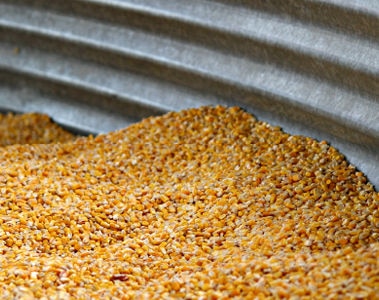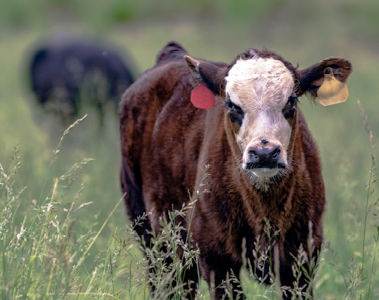
The Importance of Proper Feedstuffs Sampling
16 Dec 2024
As we see most years, Mother Nature has afforded us another interesting growing season in North America. Unlike the past couple years, the majority of the Corn Belt has not experienced drought conditions throughout the growing season. As harvest goes into high gear across the Midwest, more areas have been on the drier side following a warm, dry end to summer and start of fall. Despite recent rains from remnants of Hurricane Helene, areas like Ohio, West Virginia, and southwest Pennsylvania are still suffering one of the driest periods on record. Tropical weather systems like Helene can influence mycotoxin contamination patterns in addition to all the other devastating outcomes such weather events can cause. This article will share mycotoxin contamination predictions based on the weather conditions and other factors which have occurred this growing season and into harvest thus far.
Reminder: mycotoxin contamination can vary tremendously across the USA, throughout a state, within a corn field, and even within an ear of corn. Crops still standing in the field will be impacted by weather systems throughout harvest and weather conditions can continue to alter mycotoxin patterns even once a feedstuff is in storage. Mycotoxins can accumulate up until the time the feed is consumed, so it’s important to keep in mind what comes out of the field is not necessarily what contamination your animals might have to deal with in the end.
Disclaimer: the predictions presented in this article are not guaranteed – they’re educated guesses based on observations and an understanding of the factors which can influence the presence of mycotoxins in crops. So – what mycotoxins will 2024 harvest bring? My master’s advisor had the perfect answer for this question (although this wasn’t something I ever asked him), “it depends”. Many factors influence mold growth and mycotoxin production, so it’s complicated and difficult to accurately predict what contamination will look like, but the author believes that 2024 crop will likely look different in some areas versus what we’ve seen the past few years. What we’ll see contamination-wise depends on location and multiple factors which can vary tremendously. Below are some high-level overviews of conditions and corresponding mycotoxin predictions for a select few regions of the USA:
Upper Midwest
Early season saw above average rainfall in areas, but the region has dried out over the course of the growing season and is currently in varying degrees of drought (primarily abnormally dry to moderate drought). Much of the region was not considered in any level of drought around the time of silking when corn plants are most susceptible to colonization by mycotoxin-producing molds. However, wet conditions around silking increase the risk for mycotoxins.
Areas which experienced hail damage will be at an increased risk for mycotoxins.
Some areas have experienced greater foliar disease pressures which can enhance the risk for infection with secondary mycotoxin-producing molds.
Potential risk for trichothecenes including deoxynivalenol (DON aka “vomitoxin”) and T-2 toxin etc. as well as zearalenone (ZEN). Fumonisin (FUM) risk expected to be lower, but accumulation could be greater as harvest progresses under dry conditions. Late season moisture could increase levels of trichothecenes and ZEN in grain harvested later. Do not overlook the risk of ergot alkaloids in small grains which experienced wetter conditions earlier in the year.
Anticipation of higher contamination vs. what was observed in our 2023 survey data set.
Great Lakes
Ohio (OH) has been a “hot spot” for DON and ZEN especially the past few years. With the widespread drought conditions (see map below), including record dry weather in the south / southeastern portion of the state, there is possibility that DON and ZEN pressures will be reduced and FUM pressures will be elevated.
Remnants of Hurricane Helene brought moisture to the region late in September into early October. Despite several days of persistent rain, relatively little impact was made on the drought status across Ohio as accumulations were not extensive for the most part.
Crops harvested early (prior to Helene) are anticipated to have lower concentrations of DON and ZEN with potential presence of FUM. Crops harvested after Helene introduced moisture to the region may see elevated levels of contamination vs. what came out of the fields early.
Indiana (IN) and Michigan (MI) have gotten drier later into summer, but not to the same extent as parts of OH. The majority of IN and MI were not experiencing drought around the time of silking.
Anticipation of lower contamination levels of DON/ZEN in early harvested corn vs. previous years, but potential increase in FUM due to dry weather. This does not mean there will not be a risk of DON/ZEN in early corn; the thought is concentrations will potentially be lower than the past few years (ex: 2 ppm vs 6 ppm) but might also be found less frequently (ex: 70% vs 100%). Corn harvested later will be at a higher risk for contamination due to late season moisture as well as the magnitude of temperature fluctuations day vs night increase.
Drought conditions likely to affect availability of feedstuffs in the region including hay / other forages.
Southeast
As always, there is a greater potential for aflatoxins and FUM in the southern portion of the USA due to warmer weather.
Tropical systems like Hurricane Helene which brought excessive moisture, high winds, hail, etc. increase the risk for contamination including adding other toxins in the mix like trichothecenes and ZEN.
Corn harvested prior to Hurricane Helene (and Hurricane Debby) should have lower risk of trichothecenes and ZEN.
Other feedstuffs, including crops like cotton and its coproducts, are likely to be impacted by the devastation Hurricane Helene brought to the region (where viable crop is left to be harvested).
Anticipated similar or higher contamination vs. what was observed in our 2023 survey data set due to active tropical weather season affecting crops standing in various parts of the region.
Understanding what stressors occurred in your area (or the areas you source grain from) can help indicate what mycotoxin(s) to be on the lookout for and may also provide insights into how frequently new crop feeds should be screened following harvest. However, molds do not read textbooks, so there is no guarantee that these predictions will play out as described in this article. The best way to understand what mycotoxins are in your feed is to routine monitoring. We welcome sample submissions as part of our annual mycotoxin survey so if you’d like to evaluate your feed ingredients and assess risk in your operation, please contact your dsm-firmenich representative to learn more about our PROcheck mycotoxin testing service. If predictions for your region were not provided in this article, consult your dsm-firmenich representatives for insights.
Check back next month to see what our preliminary 2024 mycotoxin survey results reveal and how they compare to these predictions!
References:
U.S. Drough Monitor: Current Map | U.S. Drought Monitor (unl.edu)
21 October 2024
Not all products are available in all markets nor associated claims allowed in all regions (including but not limited to USA and Canada).

16 Dec 2024

16 Sep 2024

We detected that you are visitng this page from United States. Therefore we are redirecting you to the localized version.